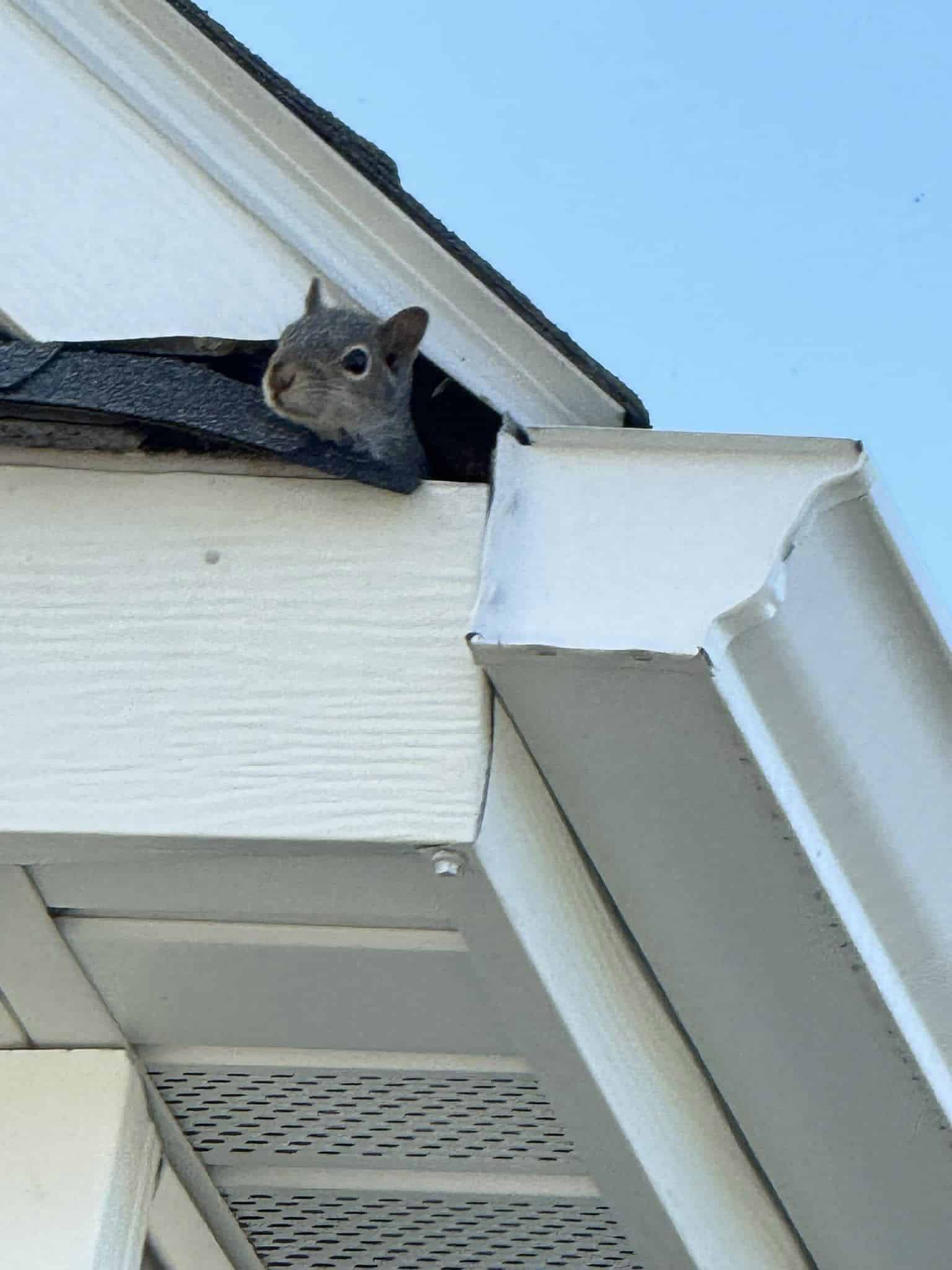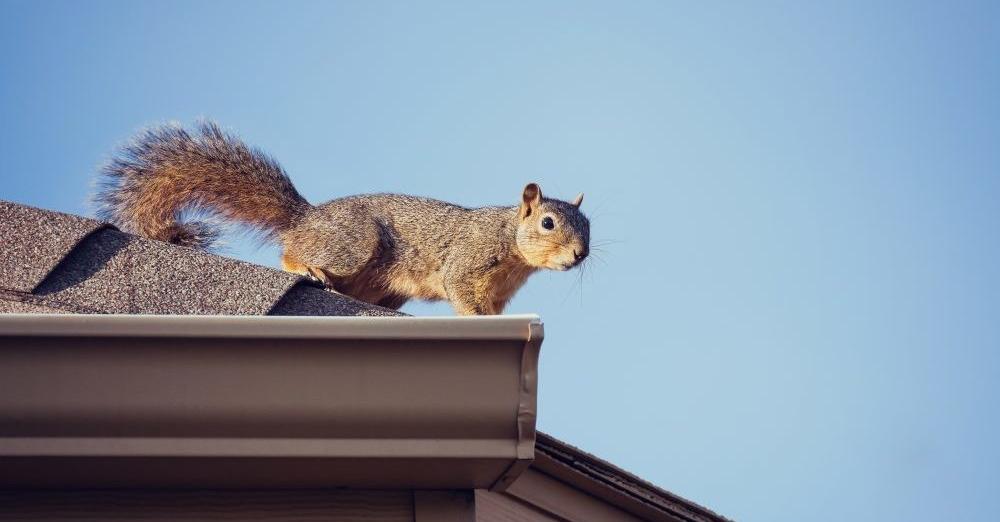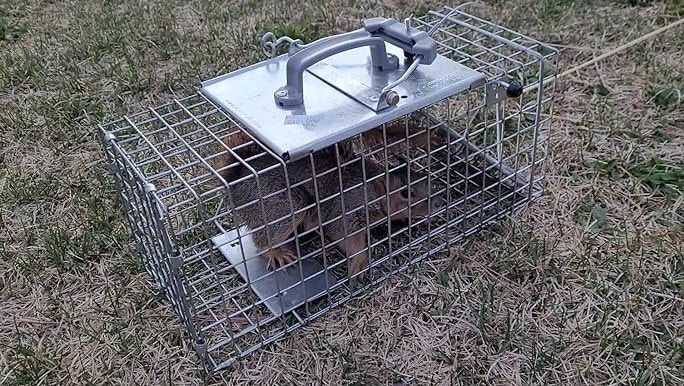Squirrels are the ultimate opportunists, always on the lookout for a prime piece of real estate. I hate to be the bearer of bad news, but your attic could be a luxurious space for these furry little acrobats, offering them warmth, safety, and perfect nesting spots.
Once inside, squirrels will convert your cozy, perfect, and often-forgotten attic into their playground. Besides causing you sleepless nights with their persistent scurrying, scratching, and chewing, squirrel activities in your attic can also cause structural damage.
So, the only way to restore your peace and protect your property is to get rid of them. But how? This guide will provide effective tips on how to get rid of squirrels in the attic, so keep reading.
Are squirrels in the attic dangerous?
Before we explore the options to get rid of squirrels in your attic, is doing so necessary? Yes, squirrels in the attic can pose several dangers and problems. Below are the reasons that make squirrels dangerous in your attic.
a) Make Your Home A Fire Hazard
Squirrel teeth constantly grow; to keep them in check, they gnaw on objects. Unfortunately, they commonly target electrical wires. This is arguably the most dangerous thing about having these rodents in your attic.
When squirrels chew on these wires, they can strip away the protective insulation, exposing the conductive metal. This can cause sparks, short circuits, and even fires.
Furthermore, the nesting materials, such as twigs and leaves that squirrels bring in to build their nests, can easily ignite if they come into contact with exposed wires or electrical equipment.
b) Structural Damage
Besides chewing on electrical wires, squirrels can chew on structural components like wooden beams and rafters, weakening your home’s structural integrity. Within a short period, these rodents can turn a sturdy support beam into a weak wood piece.
The situation worsens as they continue chewing on your home’s structural components. Moreover, squirrels can chew through shingles, roof decking, and siding to access the attic, leading to leaks and water damage.
Read More:
c) Damage To Insulation
Squirrels will rip apart your insulation to make fluffy nests. The damage will reduce the effectiveness of the insulation, leading to reduced energy efficiency and energy loss, which in turn causes your heating and cooling systems to run more frequently and for longer periods.
Moreover, damaged insulation can lead to moisture problems and mold growth.
d) Health Risks To Pets and Humans
Squirrels carry many diseases, some of which are dangerous to humans. Common ones are plague, tularemia, ringworm, and typhus. These rodents also carry parasites such as fleas, ticks, and mites that can infest homes and spread to humans and pets.
In addition, squirrel droppings and urine can accumulate in insulation and other materials, leading to unpleasant odors and potential respiratory issues for sensitive individuals.
How To Get Rid Of Squirrels In The Attic
Now that you know the dangers of having squirrels in your attic, let’s tackle how to eliminate them effectively. Below are the methods you can rely on.
1. Identify The Problem
Squirrels are not the only attic invaders, so before doing anything else, you must first confirm that you are dealing with them, not other pests like rats or mice. This ensures you implement the right solutions. The signs that you have squirrels in your attic include:
- Noises: You’ll typically hear scratching or scurrying noises in the morning or afternoon. Chewing sounds from gnawing on wood, wires, and insulation can also signify their presence.
- Droppings: Look for small, dark, and cylindrical droppings, especially along squirrel travel routes and nesting areas.
- Nests: In the attic’s corners or hidden areas, you may find nesting materials like insulation, twigs, and leaves.
- Chewed Materials: Look for signs of gnawing on materials such as electrical wiring and wooden beams.
- Structural Damage: Holes or gnaw marks on eaves, vents, soffits, and other potential entry points could indicate the presence of squirrels, and so can torn or displaced insulation.
2. Locate Entry Points
To invade your attic, squirrels must get in from somewhere. You must identify these entry points and seal them. Inspect your home thoroughly, focusing particularly on areas around the roof and attic.
Common entry points include roof vents, chimneys, eaves gaps, and openings around utility lines. After you identify the potential entry points, mark them for repair.
3. Humanely Remove The Squirrels
Knowing where squirrels are entering your attic, you can begin to evacuate these pesky rodents. The methods below are effective in removing squirrels.
a) Encourage Squirrels To Leave
Motivate squirrels to leave your attic by making the space less hospitable, thus motivating them to seek alternative nesting sites elsewhere. The strategies below should help you encourage squirrels to leave your attic.
- Light Up Your Attic
Squirrels prefer dark and quiet spaces for nesting, so introducing light into your attic can make it less attractive to them. Place bright, portable lights in your attic and leave them turned on day and night. Alternatively, use work lights or floodlights if you need higher intensity.
- Utilize Scent Repellents
Squirrels find certain scents highly pleasant. Use them to irritate them into leaving your attic. Options include:
Ammonia: soak rags in ammonia and put them close to squirrels’ nesting areas.
Apple Cider Vinegar: Similar to ammonia, soak rags in apple cider vinegar and distribute them around the attic.
Mothballs: Place mothballs in corners and near entry points. Handle mothballs cautiously, especially if you have pets or children, because they can be harmful if ingested.
Commercial Repellents: Purchase and place commercial squirrel repellents strategically around your attic. These repellents are formulated with scents that squirrels dislike, such as predator urine or other strong odors.
- Create Noise
Fill your attic with human voices by turning on a radio to a talk station and placing it in the attic, close to the squirrels’ nesting spots. The radio doesn’t have to be loud enough to fill the entire house; the sound just needs to fill the attic.
You can also drive away squirrels with ultrasonic repellents designed to emit high-frequency sounds.
4) Apply Taste Deterrents
Deterrents that focus on taste are another way to deter squirrels. This approach is beneficial, especially if these rodents are chewing on your wires or wood.
Capsaicin Spray: Use a capsaicin-based spray on surfaces that squirrels are chewing. The spicy taste will discourage further gnawing.
Bitter Apple Spray: This bitter apples spray is often used to deter pets from chewing and can help against squirrels as well.
5) Install One-Way Exclusion Devices
One-way exclusion devices let squirrels leave your attic while blocking their return. Install these devices at entry points to allow squirrels to get out but not re-enter.
Set up the device at the most frequently used entry point and temporarily seal other potential entry points using wire mesh or similar materials to guide the squirrels toward the exclusion device. Once the squirrel exists, the exclusion device’s funnel or door mechanism closes behind.
6) Set Up Live Traps
You can catch the squirrels in your attic with live traps baited with peanut butter, nuts, or seeds. Set up small to medium-sized cages with a spring-loaded door in areas with visible squirrel activity. Check the traps frequently and release captured squirrels.
Note
You’ll need to give the live traps or one-way exclusion devices time to capture all the squirrels or allow them to leave, respectively. So, monitor your attic regularly to ensure no squirrels are left behind.
7. Prevent Re-entry
Once you are sure all squirrels are out, seal all entry points to keep these rodents from returning. This will also help make your home squirrel-proof and prevent future infestations.
When repairing and sealing the entry points, prioritize larger openings and any active entry points where you see evidence of recent squirrel activity. Cover larger holes and gaps with metal flashing and heavy-duty hardware cloth to seal openings like vents and chimneys.
As for smaller cracks and gaps around utility lines and between fascia boards, fill them with expanding foam or caulk. Also, consider installing chimney caps and vent covers to keep wildlife out. You can install metal drip edge flashing along the roof edges to deter squirrels from chewing.
8. Cut Tree Branches That Overhang Your Home
Furthermore, you should cut branches that overhang your roof because they can provide access points for squirrels. Look for branches within 10 feet of your roofline.
You can have someone assist you by holding the ladder and ensuring you are safe while you work.
9. Clean Up
After evicting the squirrels and sealing the entry points, clean the attic thoroughly to remove droppings and nesting materials. Also, repair or replace any chewed wires and damaged insulation and structures.
When cleaning, wear gloves, a long-sleeve shirt, pants, a mask, and safety goggles to protect yourself from disease-carrying droppings, urine, and nesting materials.
Summary
There’s no doubt that squirrels are hard to control and a nuisance. However, that doesn’t mean evicting and keeping them from returning is impossible. Take back your attic using humane eviction methods combined with deterrents and seal entry points, too. It would be best to avoid poisons and lethal traps as these can cause unnecessary suffering. If needed, seek professional assistance to ensure the problem is fully resolved.

I’m Mike Hyle, an exterminator with 7+ years of experience handling all sorts of pests, including mice, cockroaches, bed bugs, and termites. I also write for Pest Solutions DIY blog to share my knowledge and help homeowners keep their homes pest-free. Outside work, I enjoy hunting, snowshoeing, and exploring nature. Check out my blog for helpful pest control tips!



